 Leading Blog | Posts by Month |
 Leading Blog | Posts by Month |
01.31.22

LeadershipNow 140: January 2022 Compilation
See more on
Posted by Michael McKinney at 09:51 AM
01.28.22

Provoke Your Future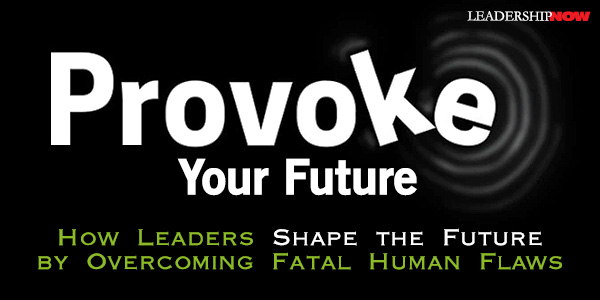
WHEN faced with uncertainty, the intuitive response is to “wait-and-see.” We get stuck in the momentum of the past and the need for solid ground, making it harder for us to capitalize on emerging trends and changes. More often, we miss them entirely and scramble to respond if we can. In Provoke, authors Steven Goldbach and Geoff Tuff explain that there are two phases to any trend: If and When. And between the two is a transition they call the Phase Change. In the initial “if” stage, it’s still uncertain if the trend will come to fruition; in the “when” stage, the trend has progressed, gathered momentum, and crossed an important inflection point where it’s no longer uncertain whether it will come to fruition. It’s only a question of when and, sometimes, to what extent.
The challenge is to get ahead of the Phase Change so that you can make the most of the emerging opportunity. The wait-and-see approach doesn’t work. You must act and provoke a better future. These days, the conviction to act—especially in the absence of perfect data—is the only way to provoke the future you desire. Action creates energy. Action allows you to position yourself to see the peak sooner and more clearly than others. Action gives you the power to move through the phase change of “if” to “when” so that you can make the most use of the kinetic energy when it is released. But how do you spot trends? And what trends? In the beginning, the signals are weak and hard to see. We easily miss them. “The best provocateurs pay attention to all weak signals, at least to begin with. As a general rule of thumb, anything that has the possibility of impacting your foundational business model—or mission—should be paid particular attention to.” To do this well, you need a model of provocation to access early and weak signals as they appear on your radar. The authors present five principles of provocation: 1. Envision the Future This is an ongoing provocation. “The most powerful envision moves involve the development of multiple scenarios or stories of how the future could unfold, along with leading indicators that help give notice when the relative likelihood of any given scenario goes up or down.”2. Position Yourself for Success While a trend is still in the “if” phase, you want to position yourself to better understand and explore the trend as it starts to reveal itself. A tend moves into the “when” phase primarily in one of two ways: naturally (no primary cause) and synthetically (happens because of action you, and usually, others take). 3. Drive Change The Drive provocation is used when the future can be driven by the organization’s own actions. “These are the provocations that allow you to act in a way that creates advantage in a world that you know is going to come true ... even if you don’t know exactly when.” 4. Adapt “In adapt, while you are still able to shape your own destiny, you believe you can’t have influence on the trend itself in a way that is perfectly consistent with your existing business model; you just need to reshape your organization to take advantage of the trend.” 5. Activate Your Ecosystem It is rare that your organization has the skills and resources required to shape the future alone. We have to look beyond our organization. “The trick for executives these days is to consider the ecosystem options in front of them in a way that allows them to make a choice that leads to advantage from participation in the direction that they have decided to provoke.” The purpose of a provoke mindset is to enable a series of minimally viable moves that continuously shape the trend as it unfolds. It’s likely that the path to provoking a better future is a smooth arc. Rather, it’s likely to require multiple small recalibrations along the way. The best strategy is a continuous learning process of aiming-acting-learning against the trend, understanding the nature of the impact you are able to have on a given trend, and leveraging minimally viable moves to make forward progress. In times like these, action beats wait-and-see. The ability to act, adapt, and act again provides an advantage in times of great change. Provoke the future. 
Posted by Michael McKinney at 02:37 PM
01.27.22

Leading Thoughts for January 27, 2022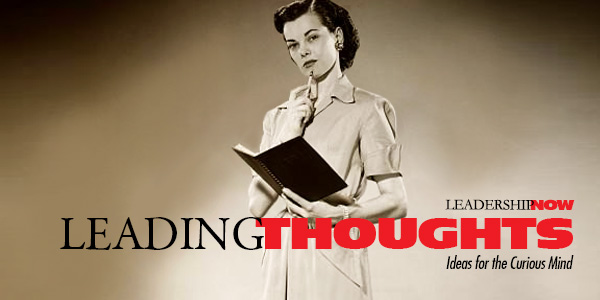
IDEAS shared have the power to expand perspectives, change thinking, and move lives. Here are two ideas for the curious mind to engage with: Amelia Dunlop on grace: “Grace is what we offer to each other when we show kindness to the parts of our humanity that are in need of elevating. It is too easy to point to the failings of my colleagues around me and not extend grace. I find myself saying things like, ‘With grace, he might not have known that this was important.’ Or ‘If we extend grace, she might have a lot going on right now and simply missed the email.’ It is because we are human, not perfect, that we need to learn to extend grace to each other, something that I find very much needed every day in the workplace.” Source: Elevating the Human Experience: Three Paths to Love and Worth at Work
Sandra Sucher and Shalene Gupta on regaining trust: “We tend to believe that trust, once broken, cannot be regained, when actually the truth is somewhat more complex. Trust, once broken, cannot easily be regained. We fall into this fallacy for two reasons. First, trust is so hard to regain that so few do it, making us think that broken trust is truly lost forever. Second, because trust is so hard to regain, it makes more sense to focus on protecting your reputation and avoiding losing trust in the first place. However, consider Boeing, Volkswagen, Wells Fargo, and Uber. All of these companies are battered but still in business. A trust betrayal does not necessarily mean game over. Still, be warned, trust regained looks different than trust that was never betrayed.” Source: The Power of Trust: How Companies Build It, Lose It, Regain It Look for these ideas every Thursday on the Leading Blog. Find more ideas on the LeadingThoughts index.
Posted by Michael McKinney at 01:09 PM
01.26.22

Indra Nooyi: My Life in Full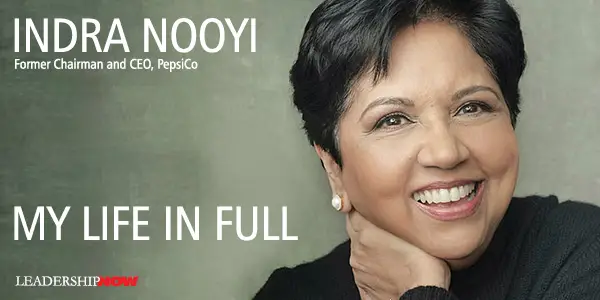
THE life story of Indra Nooyi is compelling and instructive. She grew up in Madras (now Chennai), India. Her memoir, My Life in Full is much more than an event-driven biography. It is full of candor and insights that reveal much about her character. She is a driven yet humble leader. It’s hard to put down. Growing up in the 50s and 60s, she recalls, Madras was a place that came to life at 4 a.m. and shut down at 8 p.m. Her family played a huge role in her life, as much of her success can be credited to her upbringing. Our Madras household was always noisy, with plenty of laughing, arguing, and shouting. It was a strict environment. Our life was steady and pushed me to learn both self-discipline and how to speak up. I got the courage to branch out and prove myself because I was raised with a framework that gradually gave me the freedom to explore. There was always home to anchor me. “The twin demands that define me have always been my family and my work.” She states this truth that, unfortunately, has been lost on so many today: Family, I learned from the very beginning, is fundamental to our lives on this planet. It is both my foundation and the force that has propelled me. We thrive, individually and collectively, when we have deep connections with our parents and children, and within larger groups, whether we are related or not. I believe that healthy families are the root of healthy societies. Refreshingly, she talks candidly about the obstacles she faced in a constructive way—never playing the victim. Always juggling family and career. The challenges of being a woman. Personal responsibility and self-efficacy are very much a part of who she is. In college, she joined the debating team. “Looking back, I can say that debating helped me build my confidence and hone my ability to persuade others to accept my point of view, and artfully push back on an opposing perspective. It was endlessly helpful.” In 1978 she moved to the United States to study at Yale University. “I entered the US through the front door, with a visa and a seat at a prestigious university. It was my choice, and I knew it meant that I had to work my way up. Maybe this prepared me for a tough life in the corporate world; it certainly required me to accept heartache and pain in my personal and professional lives and to just plow on. My duty was to honor this opportunity.” After Yale and her marriage to Raj Nooyi, she takes us through her career changes and the lessons she learned along the way. “Leaders need to understand the details behind what they are approving before they affix their signature to anything,” says Nooyi. “This is not about trusting the people that work for you. It’s about basic responsibility. Don’t be a ‘pass-through.’” Earlier in her career, when working for Motorola, she demonstrated the need to get herself up to speed before making any decision. She recalls, “I knew nothing about cars and electronics. So, I had two community college professors come twice a week to my office for lessons.” A pattern she followed for the rest of her career. In 1994 she took her first position at PepsiCo and eventually rose to CEO in 2006. Her plan was to rethink the company and add three imperatives to their work: nourish humanity and the communities in which we live, replenish our environment, and cherish the people in our company. She called it Performance with Purpose. No business can ever truly succeed in a society that fails. I believe that a company’s impact on society needs to be written through all business planning, and that this cannot be an afterthought. What’s good for commerce and what’s good for society have to go together. This leadership philosophy has guided her success: “The fundamental role of a leader is to look for ways to shape the decades ahead, not just react to the present, and to help others accept the discomfort of disruptions to the status quo.” She says the “frustrations of motherhood persisted for me, and I still felt plenty of low-lying guilt. For all my work stress, travel, and impossible schedules, I really tried to make sure I was a caring, involved mother to the extent I could.” I have to share this story as it says so much about her and her family and the grounding it gave her. After she got the news that she would become the president of PepsiCo, she headed home at about 10 p.m. The wintery roads were peaceful and dark. In those fifteen minutes behind the wheel, I let myself enjoy my accomplishment. I had worked so hard, learned so much, and earned my place. As she reflected on her mother’s comment, she thinks it speaks to something “deeply important about how we combine work and family. She was right, of course, that no matter who we are or what we do, nobody can take our place in our families.” At the same time, yes, she should have let her share her news. “I have a feeling that if I were a man, a husband, a father, I might have had a little more leeway.” I know it’s easier said than done, but we really need to let go of perfection. I often felt that, even as I was gaining influence and power in the corporate world, I was failing my family because I wasn’t home more. Looking back, I’m a little heartbroken that I spent so much energy worrying about this. Nooyi is grateful for her relationship with her husband, Raj. “The only way our marriage works and lasts is because we are on this journey together for the success of our entire family. For any working woman with kids, a supportive spouse can compensate for all of the guilt we carry around.” The “crown in the garage” comment also speaks to the broader relationship between power and humility. This is an incredible lesson for those who rise in their careers and end up in roles that give them real authority in the workplace and in society. Don’t miss this book—My Life in Full. 
Posted by Michael McKinney at 09:01 AM
01.24.22

Founded: The No B.S. Guide for Entrepreneurs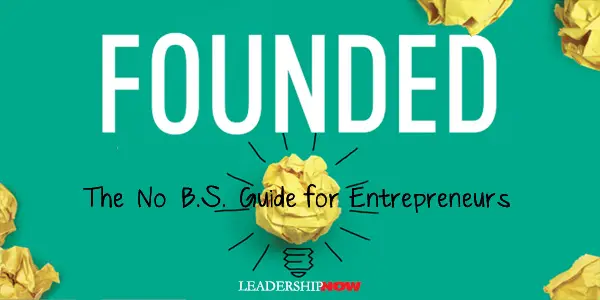
THE thinking required to practice entrepreneurship will serve you well no matter what you do. And it is that kind of thinking that is needed in organizations today. Succeed or fail, the process will change how you show up in the world. Melissa Kaufman and Mike Raab are serious about entrepreneurship in ways that too many schools with entrepreneurship programs aren’t. They are the directors of Northwestern University’s student entrepreneurship program, The Garage. It is a physical space and community designed to teach students an entrepreneurial mindset and skillset through experiential learning. It is a remarkable learning environment. Their book, Founded: The No B.S. Guide for Student Entrepreneurs is, as the title suggests, directed to the college or grad student. It is true, as they say, this time in a person’s life is a great time to work on an idea. “Unburdened by the responsibilities you will shoulder later in life … you’re prepared and more willing to try something totally new. There will never be a time in your life when you are surrounded by so many smart people from different backgrounds and world-class experts in a variety of fields.” And The Garage takes full advantage of that. But don’t be fooled. What they offer here is a goldmine for anyone, at any age, wanting to bring a new idea to life. They begin by making clear that entrepreneurship is not who you are but something you do. It is an activity. This means if you want to be an entrepreneur, you have to do the work. They caution, “Don’t get stuck in thinking or planning mode. Instead, focus on doing. Make a move, gather feedback, make another move.” To begin, you have to think like a scientist and share your idea with others “so you can gather feedback, improve your product or service, and repeat the process.” It is a mistake to keep your idea secret until it is ready for the market. “Until you are getting feedback from people on the basic concept, there is no reason to spend any time on it.” The best founders have “strong convictions, loosely held.” What if someone wants to steal your idea? This is rare. The idea isn’t the valuable thing. But it drives some founders to require a nondisclosure agreement (NDA) from anyone they speak to. The hard reality for these individuals to accept is their idea, in itself, is worthless and that it is almost guaranteed to not be an original or unique one. NDAs are a nonstarter for investors. Why? A founder who asks an investor to sign an NDA fundamentally misunderstands what their job is. Their job is not to have an idea; it is to execute that idea. No matter what your idea is, there are likely many other people working on something similar. Venture capitalists choose which companies to invest in based on which team they think has the highest potential to execute on their vision, not which team had the idea first. You know you are on to something—product-market fit—the authors say, “when growth is not your biggest problem; keeping up with demand is.” They cover the three biggest mistakes that first-time founders make: First, giving up too easily. Second, building something no one wants (“Your initial idea is not going to be exactly the one that people want.”). And third, ignoring distribution—getting your product in front of customers. Finding the right cofounder can make all of the difference. “When you choose a cofounder, you’re committing to a very big adventure together full of very high highs and very low lows.” Get a founder’s agreement in writing early on when things are going well. Include responsibilities and equity. “We recommend that you split up 90% of your equity up front between cofounders. The other 10% can be reserved for future hires and other circumstances.” Part two of the book is full of ideas, tips, and how-tos to get you grounded and headed in the right direction. They cover everything from evaluating ideas to business models, customer acquisition, building a team, pitching your company, pivoting, and understanding financials, to name a few. This book is one of the best books you could read as you think about your first startup because it lays out the realities of starting a business in a very concise, straightforward manner. They close with this thought: Although it is true that the vast majority of startups eventually fail, we hope you have seen through some of the stories that we’ve shared that the experience, knowledge, relationships, and stories gained through practicing entrepreneurship are more powerful than any other job or experience you could have. You’ll never see the world in the same light, and you’ll always be looking for the next opportunity to help others solve a problem and make your own dent in the world.

Posted by Michael McKinney at 07:25 AM
01.21.22

Uncommon Leadership: 11 Ways the Greatest Leaders Lead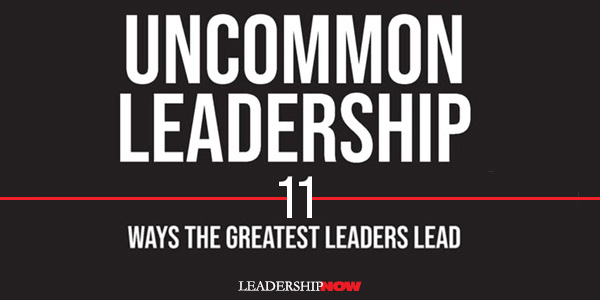
EVERYONE can lead in a positive way, but not everyone will do what it takes to make that happen. Some are content to lead unintentionally for better or worse—leading unintentional lives setting a pattern of aimlessness for others to follow. But there is the vast majority of leaders who intentionally lead in a way that has a positive impact. Then there are those that do uncommon things that make us all step back and ask how they did that. Performance coach Ben Newman has written about 11 ways the greatest leaders lead in Uncommon Leadership. Newman looks at the leadership of eleven leaders and asks what drives them to places of uncommon leadership. There is no single answer. It has been the choices they made. Mindsets they adapted. Each leader’s path was unique but similar. The story of their individual leadership journeys can serve to inspire us to step into uncommon leadership. From coach Nick Saban we learn that every choice counts. “The way you do one thing is the way you do everything. No matter what you do, you must approach every task the same way and with the same degree of high performance, self-accountability, and mental toughness, every time.” From leadership expert Jon Gordon, Newman has learned that “We are continually growing and changing. Every time I feel like I’ve grown into the person I should be, Jon is there as a reminder that I must continue to grow and change to become a better version of myself and what I am capable of achieving.” From NFL underdog Will Compton we see how critical the right mindset can be. “When you take responsibility for your thoughts, you put yourself in charge of one of the few things you can control. In this way, you can develop your own mental standard for the challenges you face. It’s not easy, but when you learn to set aside your feelings, you toss aside useless baggage, enabling you to focus on the thoughts and actions that matter.” To come from behind, “You must set a standard for yourself and be unshakeable and unwavering as you work toward your goals.” Coach Chris Klieman shows us that our edge is in the details—what you chose to focus on. “When your willpower is unbreakable, it allows you to overcome any fears of failure. Faith and inspiration provide focus and clarity that will lead you to the goals in your life.” Basketball skills trainer Drew Hanlan reminds us that “success comes from the work you put in during the unseen hours.” Hanlan believes in reverse-engineering the skills you need. “Breaking things down into their smallest pieces often reveals solutions that you can’t always see when trying to see the whole of the situation. When you can listen, analyze, change course, and solve problems, you will become a leader. Problem solvers are leaders, and those who find creative ways to achieve desired outcomes are uncommon leaders.” Desire is the foundation of passion; passion is the foundation of mental toughness. Mental toughness is the foundation for developing a standard for yourself, and the right standard, intelligently and diligently applied, creates success. From entrepreneur Andy Frisella we can see that leadership is not for everybody because some aren’t willing to put in the work, set their ego aside, and lead. “You can’t lead others until you first learn to lead yourself. Learning from your setbacks is only part of the key to success. Making changes is the other.” To succeed, we have internal voices that prop us up, get us through tough times, and feed our brains with messages that allow us to create mental toughness. But the downside of this is that sometimes, our ego gets in the way. We confuse our ego with reality, or the two openly compete for our attention, and that creates conflict. That happens to a lot of people. It’s frustrating when you think you’re doing everything you should to be successful, and you’re still not. From mixed martial arts fighter Tyron Woodley we know that “you don’t need a lot of people to support you, as long as you have the right people in your life to support you.” High jump champion Chaunté Lowe we learn about the power of embracing adversity—in her case, cancer. “You don’t have a choice about the hand you’ve been dealt. But you do have a choice as to how you respond, how you choose to fight your situation. It’s easy to become depressed and fight within yourself: to battle between wanting to give up or not.” Newman adds, “to fight your best fight is to win—that is the real victory.” The best NFL wide receiver Jerry Rice asks, “How can somebody not give 100 percent when it’s 100 percent their choice?” Newman says, “Jerry credits his success in part to his All the Time Mindset, which means you do things only one way all the time. Your approach to off-season training, in-season practices, and game-day prep are no different than when you step on the field for a game on Sunday. Performing at 100 percent becomes second nature because that’s all you do. In fact, it’s all you know how to do, every moment of every day, all the time.” The extreme life of David Goggins teaches us that the “only way to gain mental toughness is to do things you’re not happy doing. You must be in a constant state of positive growth and change. You are either getting better or getting worse, but you are never staying the same.” Finally, Newman looks to his mother, Janet Newman, who died just before his eighth birthday. She was a teacher who never stopped teaching until the very end. She taught him that “our life’s circumstances are much less significant than our responses to them.” You only have a small say in how long you’ll live. But you have an almost unlimited ability to choose how you will live while you are alive. You can choose passivity, or you can choose to be an active participant in your own life. You can choose to be a victim, or you can choose to fight and do whatever you can to overcome obstacles in your life. Her life demonstrated that we need to be mindful of everyone in our life. Never underestimate your ability to be a good leader, even if it only means being a good dad, mom, sibling, grandparent, or friend. You may only impact or lead a single person. However, we are all connected on this planet, and the seed you plant could travel far, with untold impacts to bloom and affect others. 
Posted by Michael McKinney at 09:01 AM
01.20.22

Leading Thoughts for January 20, 2022
IDEAS shared have the power to expand perspectives, change thinking, and move lives. Here are two ideas for the curious mind to engage with: Kevin Roose on resisting machine drift: “We’ve talked mainly about external forms of automation—industrial robots, machine learning, algorithms, back-office AI software. But there is a kind of internalized automation taking place inside many of us that, in some ways, is much more dangerous. Source: Futureproof: 9 Rules for Humans in the Age of Automation Warren Bennis and Philip Slater on understanding the social territory: “It is important for the leader to follow the maxim ‘know thyself’ so that he can control some of the pernicious effects he may create unwittingly. Unless the leader understands his actions and effects on others, he may be a carrier rather than a solver of problems.” Source: The Temporary Society Look for these ideas every Thursday on the Leading Blog. Find more ideas on the LeadingThoughts index.
Posted by Michael McKinney at 09:18 AM
01.14.22

The Eight Paradoxes of Great Leadership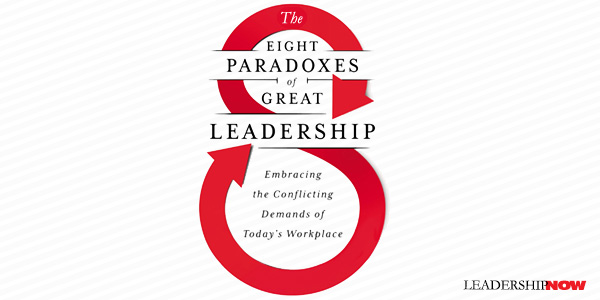
LIFE is full of paradoxes. Sometimes we move forward by backing off, performing while being reflective, being an extrovert and an introvert, leading and following, confident and humble. Paradoxes are not to be solved but managed. It is a continuum to move along. It requires a heightened level of awareness. Leaders bring clarity to these paradoxes. In The Eight Paradoxes of Great Leadership by Tim Elmore, he covers eight such paradoxes of uncommon leaders. In such volatile times, embracing these paradoxes is critical for effective leadership. Leadership is seldom easy, but today it affords us the challenge of collaborating with a more educated, more entitled, more savvy population that has greater expectations of satisfaction and rewards than in past generations. Uncommon leaders stand out because they are able to juggle seemingly contradictory traits to lead such people. Emore introduces many great concepts and (sometimes very moving) stories to illuminate these paradoxes. He gets into the nitty-gritty of what these paradoxes look like or how they are practiced in everyday situations. I’ll just give you a flavor of each, so you get the idea of where Elmore is headed with these paradoxes and how you might begin to recognize them in your own leadership. Paradox #1: Uncommon Leaders Balance Both Confidence and Humility Leading today requires combining these two attributes—confidence and humility. Reality changes so quickly, leaders cannot become arrogant, but remain in a learning posture. At the same time, team members long for their leaders to inspire them with confidence. Paradox #2: Uncommon Leaders Leverage Both Their Vision and Their Blind Spots Vision gives leaders (and teams) a direction, but blind spots are often the very motivator that enables them to approach an idea in an unconventional way—and believe they can pull it off. Most new ventures require a leader to possess a clear target they want to hit. At the same time, their inability to see all the obstacles or challenges ahead of time helps them to maintain their energy as they try to hit their target. In short, leaders usually have to see something and fail to see something to reach their goal. When Elmore talks about blind spots, he’s talking about rookie smarts. He’s not talking about the blind spots of character that lead us to the wrong choices. Regarding these kinds of blind spots, he notes, “Our blind spots are often found conspicuously close to ur strengths.” Paradox #3: Uncommon Leaders Embrace Both Visibility and Invisibility In the beginning of any mission, most people need a visible leader, demonstrating what to do and clarifying the goal. Over time, however, these people need the leader to step aside to let them realize their potential. Paradox #4: Uncommon Leaders Are Both Stubborn and Open-Minded Leaders will never reach a goal without being strong-willed. Without a stubborn will, obstacles will stop them. At the same time, they’d be naïve to think they have all the answers at the beginning of a venture. They must be open to voices of counsel; to flex and to adapt to changing realities. Paradox #5: Uncommon Leaders Are Both Deeply Personal and Inherently Collective People need big-picture vision from their leader, someone who grasps the gravity of what’s happened, and the steps required to respond to it. At the same time, people need a leader who empathizes with their personal journey; someone who understands how the struggle feels to individuals, and who articulates the vision with a personal touch. Elmore adds, “Wise leaders seemed to understand their people and offered three gifts:” context to problems, applications (practical action steps), and belief (hope for a better future). Paradox #6: Uncommon Leaders Are Both Teachers and Learners In our day of unceasing change, leaders are forced to be teachers, and organizations are forced to adapt. To do this, however, these leaders must first and foremost be lifelong learners, always adapting and never resting on what they know. Leaders are both receptacles of information and libraries of information. Paradox #7: Uncommon Leaders Model Both High Standards and Gracious Forgiveness The paradox of this uncommon leader is their propensity to forgive people. It’s not that they lower their standards. It’s simply that they’re able to absolve a team member who acknowledges they failed to meet the standard and chooses to improve. Forgiveness isn’t approving what happened. It’s choosing to rise above it. Forgiveness does not remove the past, but it does expand the future. Paradox #8: Uncommon Leaders Are Both Timely and Timeless Uncommon leaders in the twenty-first century must balance this very difficult paradox. First, they must embrace and advance timeless principles that make for lasting success, values that have stood the test of time and worked in all generations and in every context. At the same time, these leaders must leverage culturally relevant methods and futuristic resources. Elmore says that leadership approaches have changed over the last seventy years. And so they have. He says we are now in the time of the Poet-Gardener. The Poet-Gardener possesses these ten characteristics:
They are very aware leaders and read situations before they lead them. As a result, they practice paradoxical leadership as a norm. 
Posted by Michael McKinney at 09:52 AM
01.13.22

Leading Thoughts for January 13, 2022
IDEAS shared have the power to expand perspectives, change thinking, and move lives. Here are two ideas for the curious mind to engage with: Consultant Larry Miller on the need for leaders to respond creatively to challenges: “Both cultures and companies continue to progress so long as leaders recognize the challenges and respond creatively. Each successful response leads not to a condition of ease, but to a higher level of challenge, requiring yet another new and creative response. Creative response is the essential function of leaders. The moment leaders relax and rely on yesterday’s successful response in the presence of today’s challenge, the decline begins. It is natural for leaders in every stage to rely on responses they find most comfortable and to fail when they do not adopt innovative responses. Both the history of civilizations and of corporations demonstrate this relationship between the behavior of leaders and the cycle of growth and decline.” Source: Barbarians to Bureaucrats: Corporate Life Cycle Strategies: Corporate Life Cycle Strategies Graham Duncan on the victim mentality: “One great portfolio manager I know told the story of being driven somewhere by an analyst on a rainy night when a truck swerved and almost ran them off the road. “Why is stuff like this always happening to me?” the analyst instinctively responded. But to the portfolio manager, that response reflected a terrible mindset, whether on the road or in the market: a sense that the world is acting on you as opposed to your acting on the world. It is a mindset that is hard to change. But from what I’ve seen, great investors don’t have it. Instead, they’ve come to understand which factors in the market they can control and which factors they cannot.” Source: The Playing Field blog post Look for these ideas every Thursday on the Leading Blog. Find more ideas on the LeadingThoughts index.
Posted by Michael McKinney at 10:54 AM
01.12.22

19 Keys to Becoming Successful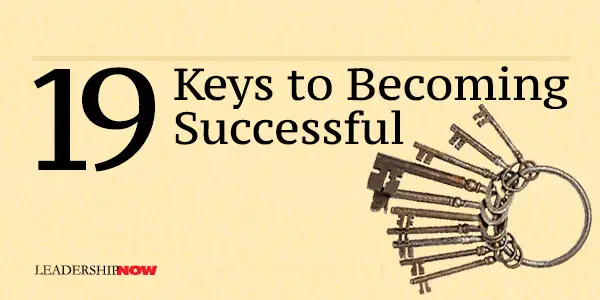
SUCCESS in life is always the result of a series of (mostly) correct choices. Investor Bryan Cressey has distilled choices he has made and the lessons he has learned from them into the book, Be a Winner: Life’s Handbook for Joy and Success. He covers everything from life lessons, entrepreneurship, connecting with others, to investing and traps to avoid. He notes this important understanding he came to realize as he started out in life: “Sometimes in life, you must be satisfied, and happy, with your accomplishments all alone—without praise from others—and learn to be motivated by your personal praise for yourself.” An important series of questions he asked himself at age thirty-eight, and we should all ask ourselves at any age, is, “What primary attribute would define me? How did I want to be? What would be noticeably different about me?” Below are nineteen keys or choices that he has learned throughout his life journey, with a selection of his comments on each.

Posted by Michael McKinney at 11:08 AM
01.10.22

Smart Leadership: Four Simple Choices to Scale Your Impact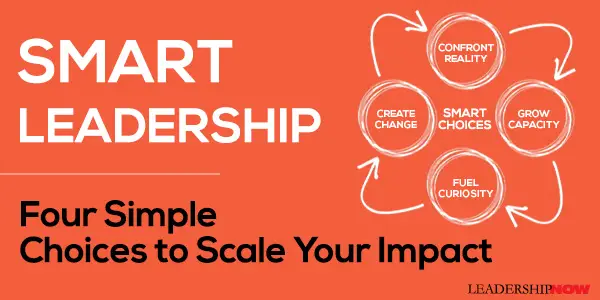
THERE’S power in choices. Yet we often don’t think about them. We operate on autopilot. Of course, not all choices are equal. Some matter more than others. Some are trivial or routine, but then there are those that change course for you, your team, or your organization. In Smart Leadership, author Mark Miller calls these Smart Choices—those that have high impact and require the most from us and most influence our futures. Assuming you have the character and skills to lead, there is one more crucial ingredient required for you to reach your full potential: Your choices. Your choices determine your impact. Smart Choices make Smart Leaders. Many factors come into play when making Smart Choices, so it is helpful to have a default way of considering them. To this end, Miller has outlined four Smart Choices to apply when faced with high-impact decisions.
Notice each choice, successfully made, leads to another choice—a virtuous cycle. The individual choices have inherent value, but the real power is released, and your impact multiplied, when you make all four choices. For each of these choices, Miller gives an overview and then goes deeper with specific practices in a couple of follow-up chapters for each question. Smart Choice #1: Confront Reality
Without the truth, you have no place to begin. You could end up anywhere. Seeking the truth is not a one-time event but a continuous process. Reality is always changing, and we must know where we are in relation to it. Your current reality is not your destination—it is only the starting point. Never be fearful of your current reality—embrace it, learn from it, and get ready to take action. What is true today does not have to define your tomorrow. It is only where you must begin. To begin to define your current reality, Miller suggest that you first define the universe. “Make a list of all of the areas in your life where it would be really good for you to have a crystal clear picture of your current reality.” Then start with the person in the mirror—“a hard look at your performance and the way you lead.” Smart Choice #2: Grow Capacity
Growing your capacity is how you bridge the gap between the reality of where you are and what you need to do to get there. Expanding your capacity is the path to your maximum potential. You must make time to lead. “Margin is not natural.” You need to create it. Margin—the time and space needed to reflect, assess, think, create, and plan. Do you have time and space for these critical activities? Without them, you will forever be reacting, like a ship without an anchor or a rudder. Capacity includes not just skills but your mental, physical, and emotional energy. Miller challenges us to “pick one of the energy boosting strategies (hydration, sleep, relationships, recreation, etc.) and make a commitment to yourself to incorporate the practice into your daily routine for thirty days.” Smart Choice #3: Fuel Curiosity
Curiosity fuels learning and your relevance. Miller suggests to rediscover your creativity, ask more and better questions, spend time with diverse and talented people (strangers), experiment, and read. Asking questions is your best tool. “Questions to a leader are like a pickaxe to a frontier miner. They can serve as your primary tool to unearth the nuggets of truth and insight you seek.” “Curiosity is rarely welcomed, particularly in a season of success. ‘If it’s not broken, don’t fix it,’ is a popular refrain from the many short-sighted, ‘successful’ leaders.” We have to avoid the success trap. Smart Choice #4: Create Change
Change puts all of these choices together. Change takes your vision and makes it a reality. Miller writes about the ability to “see the unseen.” “If you are a leader, you need a vision. You should always have a preferred picture of what you are trying to create.” Keeping a vision alive means backing up from the daily challenges of your job. Leaders mired in distractions and encumbrances of any sort cannot effectively and efficiently Create Change. How could they? They are just trying to survive. Acknowledging that change is hard, Miller reminds us of the tools of change we have at our disposal. Tools include passion (“it is the kindling to start the fires of change”), accountability, goals and measurement, values (they drive behavior), planning (must have credible plans), communication (we under-communicate the vision perhaps by a factor of ten), and recognition. As leaders, we have the opportunity to choose. Looking at our choices through the lens of these four questions will help us to choose wisely. 
Posted by Michael McKinney at 03:37 PM
01.07.22

Staying Coachable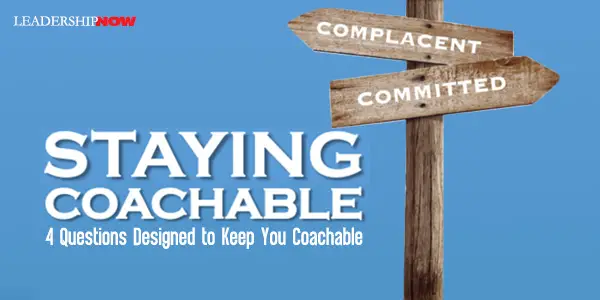
FAR too many people accept their current reality as what will be. “Each day,” says Sean Glaze, “we are faced with two options. Either we choose the path of complacency, or we chose the path of commitment” to improvement and growth.” We often begin to look for external solutions for the frustration we feel. But we take that frustration with us wherever we go. The solution is to deal with what is going on inside of us. But instead of growing, we are rearranging. We want circumstances to change rather than change ourselves. When the dust settles, more often than not, all of the rearranging will result in the same frustration in a new context. This makes Sean Glaze’s book Staying Coachable so relevant and important for our times. It’s an engaging story about a father and a son—Wallace and Max—who decide to hike The Narrows in Zion National Park. Both are frustrated—Wallace over changes at work he is resisting, and Max over the new coach and basketball tryouts. On the hike, they meet Gayle, a wise woman who listens and agrees to help them with their frustrations if they are committed to change and growth. Gayle shares the lessons her husband learned as a coach before he died and she experienced in her own career. My husband used to say, “frustration is a magnificent and powerful tool. Like a hammer, you can use it to build something impressive—or wreck something you worked hard to build.” Staying coachable is a commitment to growth. “Being uncoachable is really about being stuck in a comfort zone that a person refuses to acknowledge or leave.” Glaze says there are four main ceilings that limit our growth: the ceiling of contentment, ignoring reality, personal pride, and knowing without doing. After they part ways, she agrees to share four questions they will have to grapple with over the ensuing months if they are committed to getting unstuck and improving. Four weeks later, the first question comes, and it is about hunger: What specifically do you want? Where do you want to be by when? Who are you trying to impress? You have to want something enough to disrupt the inertia of the status quo. Question two deals with honesty: Where are you now? What “numbers” accurately measure your desired performance? What obstacles exist to achieving the success you seek? This is hard because “many people find it difficult to acknowledge where and what they are without prejudice.” If you want directions anywhere, you must pinpoint the place you are starting from. Question three deals with our willingness to accept help—humility: How do you respond to mistakes or criticism? Who are a few valuable mentors that you can learn from? This question is meant to “inspire you to reflect on how you have handled feedback or the people who shared advice with you in the past. You can’t pour growth into a cup already full of assumptions and ego.” Criticism is not a dead-end; it is a detour to somewhere better. The final question comes down to habits: What will you do differently? What are you doing occasionally that you will now do consistently? What are the current distractions that you will stop doing? Your habits are external evidence of your internal commitments. Staying Coachable is a book for everyone. And there is not a better time than the present to read and apply the lessons found throughout this book. Stay coachable! 
Posted by Michael McKinney at 01:22 PM
01.06.22

Leading Thoughts for January 6, 2022
IDEAS shared have the power to expand perspectives, change thinking, and move lives. Here are two ideas for the curious mind to engage with: Rasmus Hougaard and Jacqueline Carter on learning to be compassionate leaders: “The people who pose the biggest challenge often provide the greatest opportunity for our own development and growth. In this way, people provide the critical fuel for us to become compassionate leaders. Nearly every situation is an opportunity to learn. And the more we learn, the better ewe become. When we experience challenges from the people we work with, we have a chance: w can either resist them or we can see the situation as an opportunity to practice our leadership and our compassion.” Source: Compassionate Leadership: How to Do Hard Things in a Human Way Professor John Kotter on the need for more leadership from more people: “Although not everyone who seriously studies great figures would agree, we think it is very clear that if there was no Churchill, Martin Luther King, Jr., or Thomas Watson, the world would have evolved differently in some important ways. So the point is not that such people as inconsequential media figureheads, or had they not existed someone else would have played the same role, and just as brilliantly. Quite the contrary. The point is that we cannot depend upon mass producing heroic figures to solve humanity’s problems. There must be another way. Source: Change How Organizations Achieve Hard-to-Imagine Results in Uncertain and Volatile Times Look for these ideas every Thursday on the Leading Blog. Find more ideas on the LeadingThoughts index.
Posted by Michael McKinney at 10:51 AM
01.05.22

Twelve and a Half: Leveraging the Emotional Ingredients Necessary for Business Success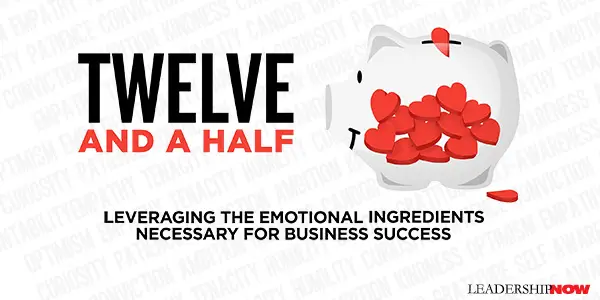
IT’S NOT surprising that the “growth potential of most businesses is limited by the emotional intelligence of their leaders,” writes Gary Vaynerchuk in Twelve and a Half: Leveraging the Emotional Ingredients Necessary for Business Success. (And it’s 99% free of the language you have come to expect from Vaynerchuk.) The soft skills always have mattered, but they are hard because we have to work on ourselves. (It is incidentally why no one is a born leader.) Because they are hard, we avoid developing them as we should if we can get by with it. And through various periods of history, we could. Today, we can’t—and shouldn’t. Vaynerchuk states that “modern society’s definition of a ‘smart business decision’ is disproportionately predicated on analytics. Business leaders tend to find safety in the ‘black-and-white.’ They find safety in the academics, math, hard data, and what looks good on spreadsheets.” He believes that it is the soft skills is the strength that “will help you survive and flourish.” He identifies twelve ingredients of emotional intelligence free from the ranting you often hear on this subject that comes across as a way to make the ranter look with it. (There is a thirteenth ingredient—candor—that he gives half because it is something he struggles with—balancing kindness with candor.) He emphasized that all twelve are important and, while equally valuable, they “must be deployed in different proportions in different situations. As you navigate every second of your life, you need to add different ingredients at different times.” Here are the twelve with selected Vaynerisms: 1. Gratitude Gratitude is a perspective on life. We panic when we compare ourselves to others. “People look upward at those who rank higher, but they don’t look downward at the billions ranked lower.” We have more to be grateful for than we think. “Be thoughtful and honest with yourself about your missteps, but don’t start dwelling on them,” or it will become the jail you live in. There’s no value in that, says Vaynerchuk. In the face of disappointment, gratitude is my chess move to limit dwelling on it. 2. Self-Awareness It’s one thing to be self-aware. It’s another thing to look in the mirror and say, “Hey, you’re not good at X.” 3. Accountability I think of accountability as the brakes. It stops the momentum of pain that comes from blaming others. 4. Optimism Choosing optimism over pessimism is, at the end of the day, wildly practical. It doesn’t mean being naïve or blind to the downsides in business or in life. In fact, I’m more aware than most about what could go wrong. I just believe I’m capable of navigating any challenge. 5. Empathy Empathy is my ear to the ground. It naturally pairs with curiosity. 6. Kindness [Kindness] is about being kind to those who have put me in a difficult position. 7. Tenacity Tenacity should never equal burnout. 8. Curiosity Curiosity mixed with empathy can lead to intuition. Then, after experiencing or “tasting” that intuition, you can develop conviction. 9. Patience When you have a good relationship with time, the pressure is lifted, and you can do so much more. 10. Conviction Conviction is the north star that keeps you on track, helping you be tenacious throughout your journey, despite the inevitable difficulties. Without conviction, you’ll miss big opportunities and lose because of other people’s opinions, which is most devastating of all. 11. Humility Humility is a requirement if you want to cultivate a lasting positive reputation and leave an admirable legacy. Leaders can’t sustain success without it. 12. Ambition People tend to have an unhealthy relationship with ambition partly because they use it as a cover-up for their insecurities. Some people set goals to build successful businesses or secure prestigious titles in organizations so they can prove something to their parents, their significant others, or their high school friends who doubted them. Their ambitions are great, but their motivation is based more on insecurity than curiosity or self-awareness. Part Two of the book gives a number of real-life scenarios after which Vaynerchuk gives his perspective on which ingredients would have worked best in that context. It is helpful in understanding how these twelve ingredients work together for a good outcome. His responses include: By starting with empathy and curiosity, you can get clearer feedback. Then accountability and conviction can help you decide what to do next. Part Three concludes the book with exercises to help you develop and grow in each of these twelve areas. 
Posted by Michael McKinney at 07:20 AM
01.03.22

The Edge: How 10 CEOs Learned to Lead—and the Lessons for Us All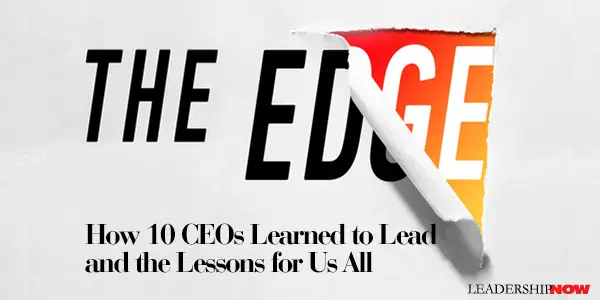
GIVEN that we live in a radically changing world, what got you here won’t get you there. In Michael Useem’s words, “The best capacities of an earlier time remain informative but also incomplete for the challenges we face ahead.” Therefore, “what’s required is a mixture of traditional capacities, fresh capabilities, and a learning bridge for combining the two.” In The Edge: How 10 CEOs Learned to Lead—and the Lessons for Us All, Michael Useem asks what gave ten CEOs the edge. The edge is that “place or point or period where your past skills are serving you, but you need to bring new skills online as well.” He explains: It can feel like a cliff edge because your comfort zone, the solid ground you navigated to get you where you are, is behind you. What lies beyond the edge is the opposite, an unfamiliar landscape barely coming into focus. Your task is now to acquire the skills you need in this new territory before your career or your enterprise falters as a result of your personal limitations. Useem has identified ten principles or capacities that will be called for to supplement traditional leadership capacities.
He chose ten CEOs that became what they needed to be when the situation called for it and incorporated at least one of these ten new capacities. “In finding their own ways forward, sometimes over years, our exemplars taken together provide us with an instructive roadmap for designing our own ways forward. We learn:

Posted by Michael McKinney at 08:28 AM
01.01.22

First Look: Leadership Books for January 2022Here's a look at some of the best leadership books to be released in January 2022. Be sure to check out the other great titles being offered this month.
There is significant evidence that an effective organizational culture provides a major competitive edge―higher levels of employee and customer engagement and loyalty translate into higher growth and profits. Many business leaders know this, yet few are doing much to improve their organizations’ cultures. They are discouraged by misguided beliefs that an executive’s tenure and an organization’s attention span are too short for meaningful transformation. James Heskett provides a roadmap for achievable and fast-paced culture change. He demonstrates that an effective culture supplies the trust that makes managing change of all kinds easier. It provides a foundation on which changes in strategy can be based, and it’s a competitive edge that can’t easily be hacked or copied.
Two world-renowned strategists detail the seven leadership imperatives for transforming companies in the new digital era. Digital transformation is critical. But winning in today's world requires more than digitization. It requires understanding that the nature of competitive advantage has shifted—and that being digital is not enough. In Beyond Digital, Paul Leinwand and Matt Mani from Strategy&, PwC's global strategy consulting business, take readers inside twelve companies and how they have navigated through this monumental shift: from Philips's reinvention from a broad conglomerate to a focused health technology player, to Cleveland Clinic's engagement with its broader ecosystem to improve and expand its leading patient care to more locations around the world, to Microsoft's overhaul of its global commercial business to drive customer outcomes. Other case studies include Adobe, Citigroup, Eli Lilly, Hitachi, Honeywell, Inditex, Komatsu, STC Pay, and Titan.
Escape the mediocrity that ensnares so many in business and become a better, more effective leader. Have you ever wondered what it would take to be a better leader, or achieve your wildest dreams, or make a bigger difference in the world? The answer lies in the choices you make: about everything from how you spend your time to the way you view the world. Smart Leadership is the latest essential business title from internationally bestselling author of Win the Heart and Chess Not Checkers. In this book, he shares the four research-based “smart choices” the best leaders make to scale their influence and results.
Donald Miller shares the plan that led him to turn his life around. There are four characters in every story: The victim, the villain, the hero, and the guide. These four characters live inside us. If we play the victim, we’re doomed to fail. If we play the villain, we will not create genuine bonds. But if we play the hero or guide, our lives will flourish. The hard part is being self-aware enough to know which character we are playing. In this book, Donald will use his own experiences to help you recognize if the character you are currently surfacing is helping you experience a life of meaning. He breaks down the transformational, yet practical, plan that took him from slowly giving up to rapidly gaining a new perspective of his own life’s beauty and meaning, igniting his motivation, passion, and productivity, so you can do the same.
Growth is the goal. Helping people develop their potential—enabling them to articulate and become the self they want to be, are capable of being, and that best serves them and others in the short and long term—is what we as individuals and leaders strive toward. But how do we grow? It turns out it happens in a predictable way, which means we can understand where we are in our growth and chart a way forward. In this compact, complete guide, Whitney Johnson dives more deeply than ever into the S Curve of Learning so that you can envision how growth happens and direct yourself and others in your organization to create a culture that fosters it. The growth and learning journey comes in three phases: the Launch Point, the Sweet Spot, and Mastery. Compelling examples of successful people will show you when and why growth is slow, how to keep going, what to do when growth and learning are almost too fast to keep up with, and how to leap from one growth journey to another.
Becoming a Master Communicator, by Renée Marino-communication coach, Broadway actress, and star of Clint Eastwood’s Jersey Boys film-is a guide for those looking to have clear and authentic communication with others by using digital technology as a tool—but not the only tool. Smartphones and computers make everyday communication incredibly convenient. However, when used as an individual’s sole source of connection, it can make one forget real human contact and interaction are incredibly vital, thus causing unnecessary misunderstandings. Through personal stories and easily applicable practices, Renée Marino explains how to become a master communicator in personal and professional settings by knowing when to use digital technology and when to put the devices down to have a direct conversation.
 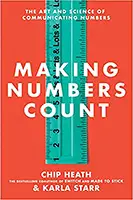 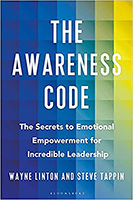
 Build your leadership library with these specials on over 28 titles. All titles are at least 40% off the list price and are available only in limited quantities. “He that loves a book will never want a faithful friend, a wholesome counselor, a cheerful companion, an effectual comforter. By study, by reading, by thinking, one may innocently divert and pleasantly entertain himself, as in all weathers, as in all fortunes.” — Isaac Barrow
Posted by Michael McKinney at 09:32 AM
|
BUILD YOUR KNOWLEDGE


How to Do Your Start-Up Right STRAIGHT TALK FOR START-UPS 
Grow Your Leadership Skills NEW AND UPCOMING LEADERSHIP BOOKS 
Leadership Minute BITE-SIZE CONCEPTS YOU CAN CHEW ON 
Classic Leadership Books BOOKS TO READ BEFORE YOU LEAD |
|